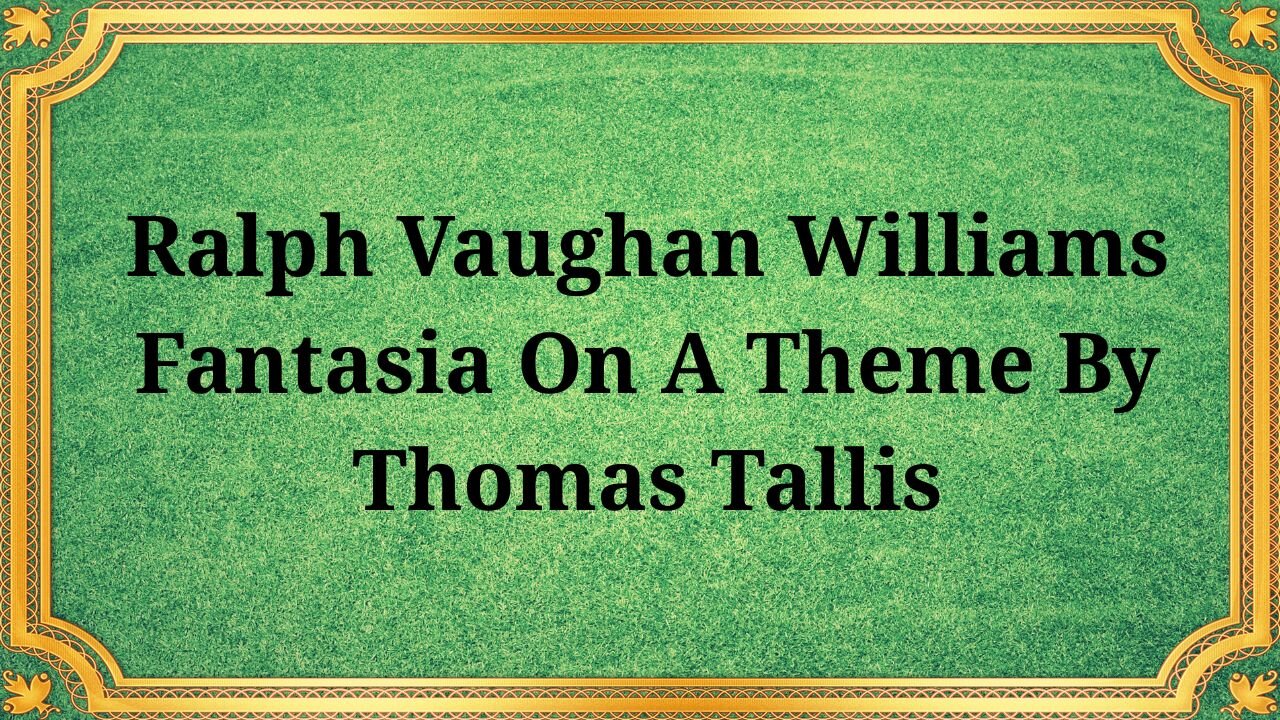Premium Only Content

Ralph Vaughan Williams, "Fantasy on a Theme by Thomas Tallis"
#rarity #classical #romantic #modern #Vaughan_Williams #English_music #String_Fantasy #Modal_Harmony #Renaissance_Music
Dimitri Mitropoulos; Minneapolis Symphony Orchestra
Date of publication: 1949
"Fantasy on a Theme by Thomas Tallis," composed by Ralph Vaughan Williams in 1910, is not only one of the key works of English musical culture but also a kind of acoustic cathedral embodying the national spirit. This work marked the birth of a new musical language, deeply rooted in English history, yet resonating with a modern and timeless quality.
The composer's involvement in the preparation of a new Anglican hymnal inspired the creation of this fantasy. During his work, he discovered the third psalm by Thomas Tallis, a 16th-century English Renaissance composer. Tallis's simple yet majestic melody became for Vaughan Williams not a theme for variations in the classical sense, but the foundation for a large-scale meditative canvas.
The genius of the work lies in its unique structure and orchestration. Vaughan Williams divided the string orchestra into three unequal groups: a full orchestra, a chamber ensemble (string quintet), and a solo trio (two violas and cello). This technique creates a spatial effect reminiscent of a choir in a Gothic cathedral, where music comes from different directions, merging into a single, spiritual whole. Tallis's melody is sometimes entrusted to the entire orchestra, sounding monumental and austere, sometimes fragmented among the soloists, acquiring lyrical insight.
The music of the fantasy develops not according to the laws of dramatic conflict, but as a flow of contemplative reflection. It combines the ancient modal harmony characteristic of Tudor music with the rich, sensual soundscape of late Romanticism. The emerging dissonances are resolved not into the tonic, but into new, captivating sonic complexes, creating a sense of mystery and spiritual quest.
"Fantasy on a Theme by Thomas Tallis" is revelatory music. It doesn't tell a story, but immerses the listener in a state of deep contemplation, evoking a sense of connection to something eternal and enduring. This work became a cornerstone of the English musical renaissance of the 20th century and remains an unrivaled example of sacred music for orchestra.
Dear listeners, you can support the channel:
https://t.me/rad_siar_al_bot
or
app.lava.top/1360410176?donate=open
-
 8:57
8:57
Classical music_Music Inspiration
4 days agoTomaso Albinoni Adagio in G minor for double bass
292 -
 LIVE
LIVE
TimcastIRL
3 hours agoAntifa CONVICTED Of TERRORISM, Fears Of CIVIL WAR Grow | Timcast IRL
15,635 watching -
 LIVE
LIVE
TheSaltyCracker
1 hour agoIt's Over Zelensky ReeEEStream 11-21-25
9,484 watching -
 1:03:56
1:03:56
Glenn Greenwald
3 hours agoIs MAGA Divided? Revisiting the Major Controversies on the Right
25.4K18 -
 LIVE
LIVE
Mally_Mouse
21 hours ago🎮 Let's Play!!: Stardew Valley pt. 33
155 watching -
 33:09
33:09
Exploring With Nug
2 hours agoThey Weren’t Ready for Nightfall on Blood Mountain… So I Helped Them Down
118 -
 1:11:24
1:11:24
The Daily Signal
3 hours ago🚨BREAKING: Democrat Steals $5 Million from FEMA, Trump-Mamdani Meeting Gets Bizarre
274 -
 1:02:11
1:02:11
BonginoReport
5 hours agoJ.D. Vance Threatens to Kill JD Vance?! - Nightly Scroll w/ Hayley Caronia (Ep.183)
79.7K27 -
 3:09:50
3:09:50
Nerdrotic
15 hours ago $9.49 earnedWarner Bros Fire Sale! | Last Ronin CANNED | WICKED For Good REVIEW - Friday Night Tights 381
27.2K9 -
 LIVE
LIVE
Akademiks
2 hours agoMeg Thee Stallion Back LYING again? Offset vs Finesse2x. 6ix9ine house robbed.. HERES WHO DID IT
878 watching